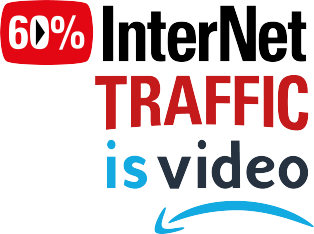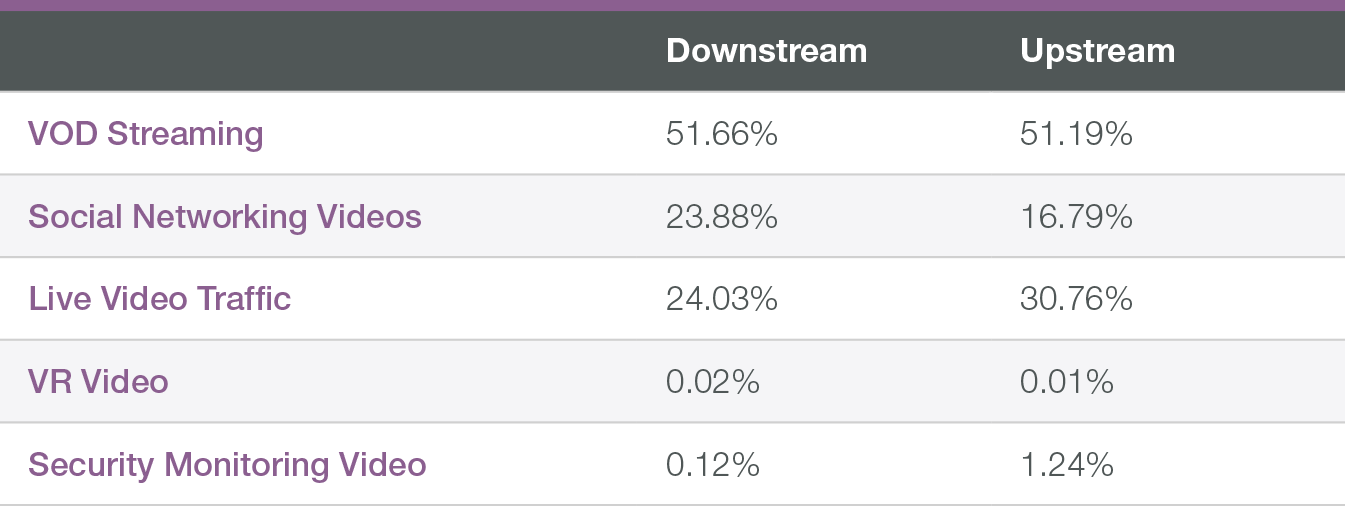Video is taking over! At this point it feels like a broken record, but in reality… well, it is the reality.
With every edition of the Sandvine Global Internet Report (or its mobile-centric counterpart) comes a flood of insights and some surprises, but the one thing that can be counted on is video is here and it’s here to stay.
Netflix Dethroned
In the latest version of the report, one of the biggest changes highlighted (and potentially a sign of a larger market evolution) was that Netflix is no longer #1 overall.
So, what?
Well, it’s kind of an important issue. Netflix has spent a lot of time and investment, making their codecs one of the most efficient in the market. With them holding that #1 spot on top video application charts, like an over-played bop, meant operators and users were getting the most content for their bytes. Netflix is still the largest single source of video, but their share overall is down as alternative video providers are growing in popularity.
Video Categories for $100
What is now known as “traditional” streaming isn’t the only area of interest or importance in the video realm. 
Social networking and live video round out the 98% of the downstream, each requiring a different set of network conditions to deliver and perform at an acceptable level.
There’s nothing worse than watching a live stream that has a lower buffering capacity and a latency problem; it kind of defeats the whole “live” concept. And talk about a terrible experience if the people across the bar, watching the same soccer game on their phone, start cheering while your phone is stalled and not knowing if it was your team that scored a goal; this is rather frustrating for any serious sports fan. The same thing can happen on social media –a goal is announced on Twitter or Facebook and your stream isn’t even close to that. These experiences lead to unhappy users.
But what about the other two per cent?
Well, there’s virtual reality (VR), which has had a lot of buzz and investment in the past couple of years, but is yet to take off. Maybe that’s for the best, sometimes actual reality is challenging enough. The current generation of VR is rather demanding from networks, needing 25Mbps bandwidth and 40ms of latency – something many networks fail to deliver today. Operators are already struggling to manage the network requirements of traditional streaming, which needs a fraction of the bandwidth that VR does and does not have the same latency requirements.
On average, video streaming applications require 1-3Mbps for SD and 3-5Mbps for HD – a fraction of what is required for VR.
And then there’s security monitoring, part of the whole home security/monitoring category within the connect/smart home market, which is expected to take off in the coming years, increasing from 15.2% to 19.4% market share of the connected home market. Interestingly (and not surprisingly) it consumes 10x the traffic on the upstream than the downstream.
Upstream (without a paddle)
Speaking of upstream, there’s been an upswing in upstream traffic (no pun intended).
But wait, isn’t video typically downstream? Well, it was, but not anymore, and fingers can be pointed in a couple of directions.
Everyone with a camera and/or a mobile device is technically a content provider, they prefer “influencer” among other titles, but who’s counting? (Well, they are – clicks, likes, and swipes to dollars in their bank accounts). Live and pre-recorded video is uploaded on video-only sites (TikTok) or social networking sites (Instagram), which then amplifies on the download. The more people seeking to monetize their streams, the more upstream grows; this extends to gaming with Twitch as well as pure social networks.
As the streaming market matures, providers like Netflix are continuously looking for ways to enhance the experience, making it more interactive and improve personalized, curated suggestions by sending statistics to feed their algorithms.
All this upstream, which is a precious resource for cable providers, creates a more challenging congestion problem – one that has a noticeable impact on user quality of experience (QoE).
Needless to say, there’s a lot of factors driving video traffic patterns and all those factors present different challenges and opportunities for operators. To help operators manage the new video landscape, Sandvine is releasing a video spotlight eBook – Avoiding the Stall: An Operator’s Guide to Video QoE – covering all the latest traffic and market trends and how to tackle the continued rise of video.






